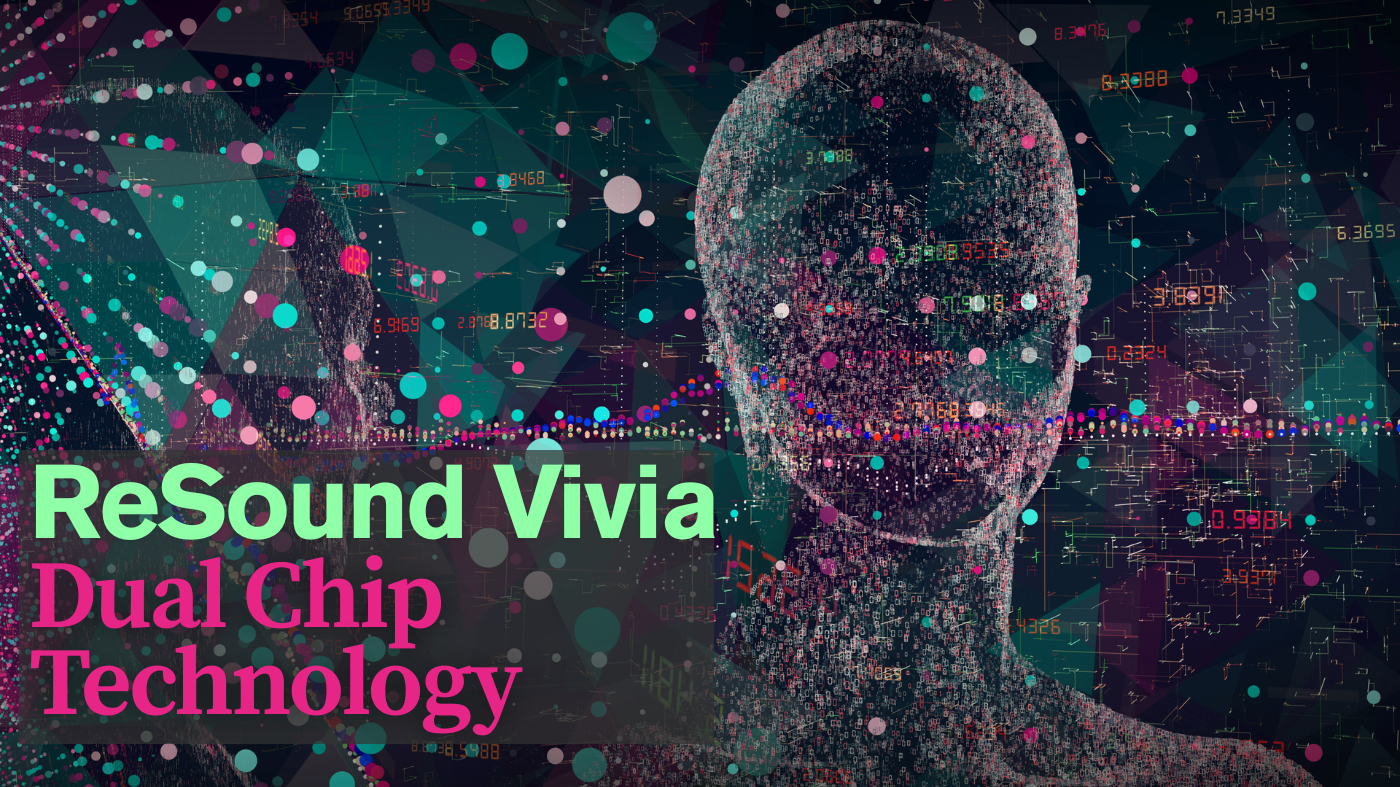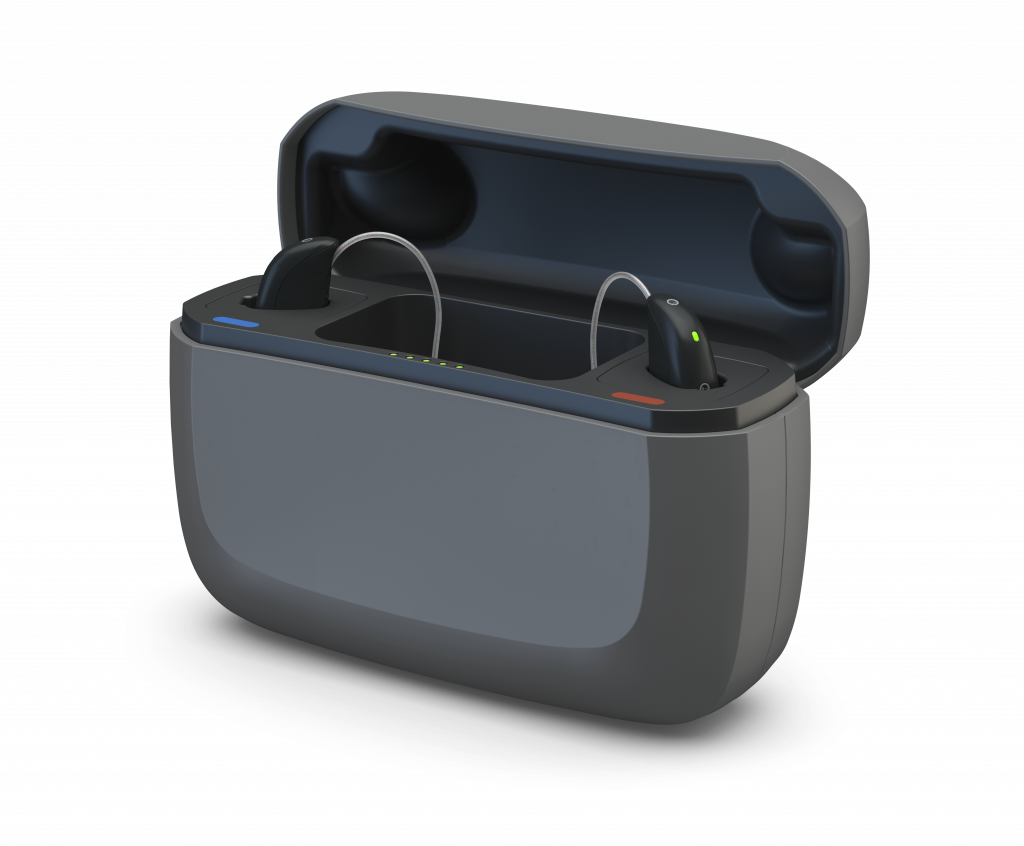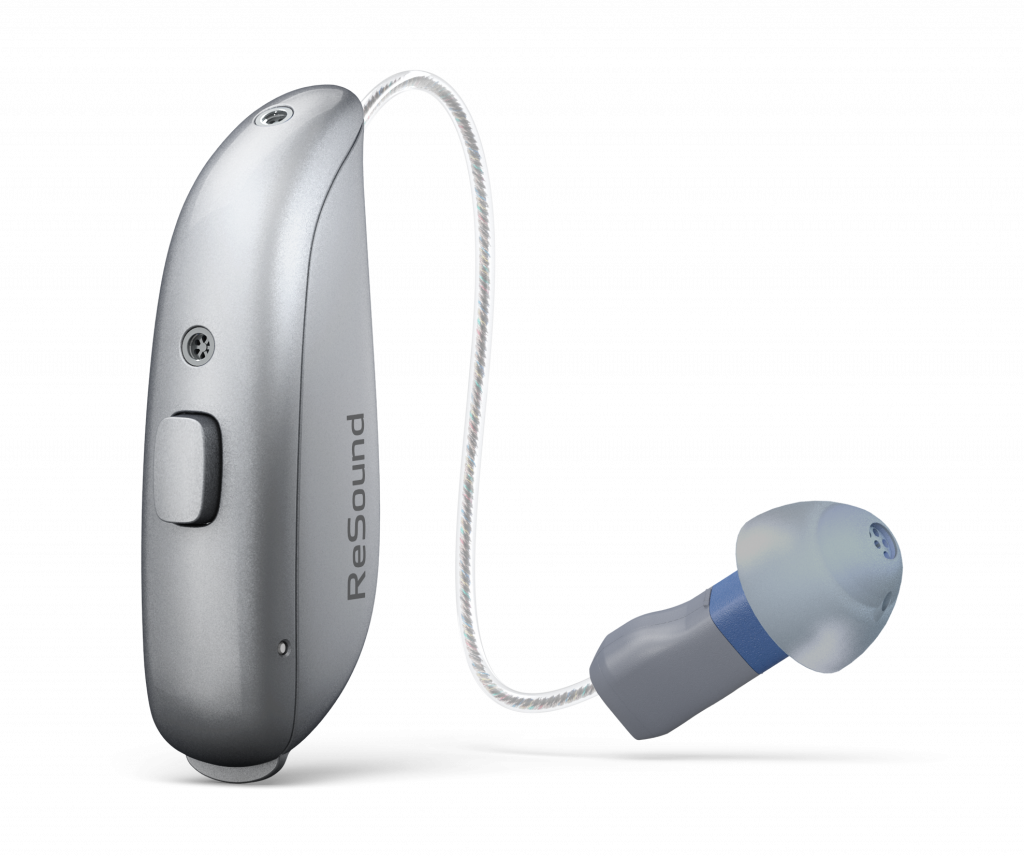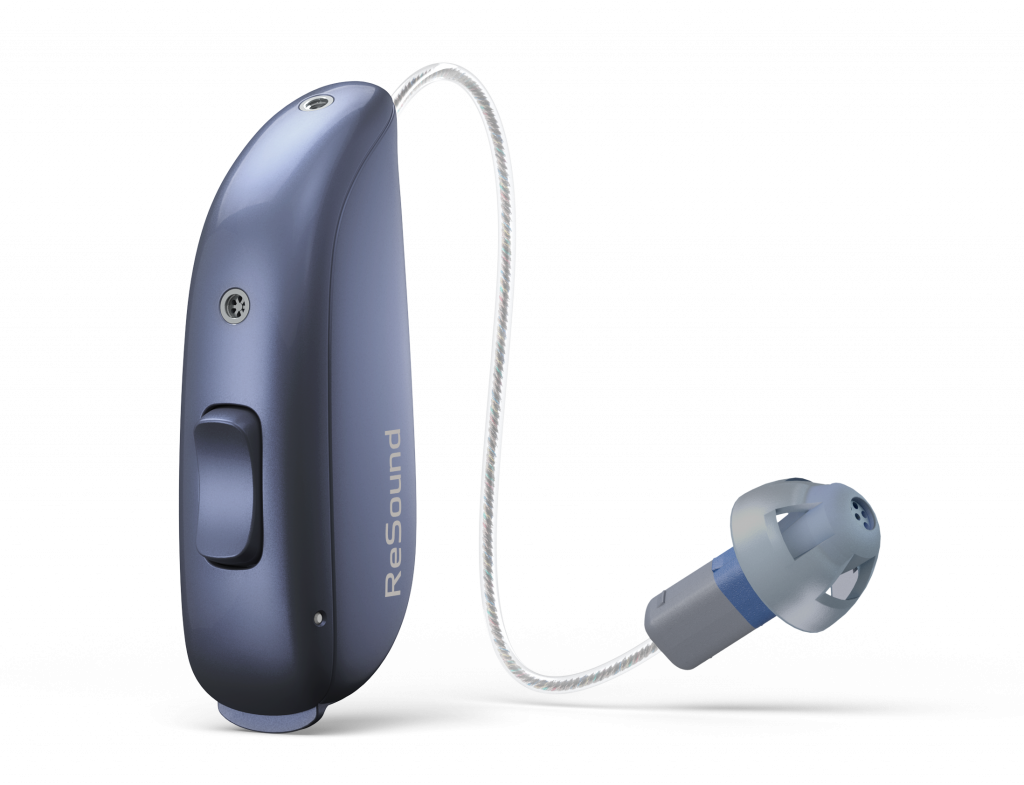
ReSound Vivia Hearing Aid – AI Technology and Groundbreaking Innovation for 2025
After a long wait, ReSound has finally brought AI technology to its hearing aids. As a pioneer in Bluetooth connectivity, the company has now launched its first AI-powered device: the ReSound Vivia.
So what makes this hearing aid stand out? It combines cutting-edge technology, intelligent signal processing, and personalized hearing solutions to take your listening experience to the next level.
Table of contents
DualChip
By integrating a second chip, the device can process vast amounts of data. This chip contains an immense knowledge base, allowing it to handle incoming signals with exceptional efficiency. But that’s just the beginning: to fully unlock this potential, the signal processing was developed using artificial intelligence designed to mimic the neural network of a person with normal hearing. Over time, this system has been trained and refined to the point where scientific testing shows its results come remarkably close to natural hearing.
The AI implementation is now considered fully developed. However, the chip itself still lacks the ability to improve autonomously. Technically, this is already feasible, but in practice, it remains a challenge: the energy required for such real-time learning is currently beyond what a hearing aid can provide, and today’s chips don’t yet have enough storage capacity to support it. Still, it’s a fascinating concept—one that paves the way for future innovations.

360° Chip
Already known from the successful predecessor model, ReSound Nexia, the 360° Chip is back—and it’s smarter than ever. With two microphones in each hearing aid, both devices work together to precisely analyze your acoustic environment. Depending on the level of background noise and whether speech is detected, the system automatically switches between different microphone settings. This ensures optimal speech understanding while keeping you connected to your surroundings.

In quiet to moderately noisy environments, the hearing aids provide subtle directional cues that help you stay oriented and focus on what matters.

In environments with moderate noise and background chatter, the microphones collaborate: the louder side enhances speech, while the quieter side softens ambient distractions—creating a balanced, clear listening experience.

In loud settings, both hearing aids zero in on speech, while preserving low-frequency sounds to maintain spatial awareness. You hear clearly—without feeling cut off from the world around you.
DNN-Chip (Deep Neural Network)
Working alongside the 360° Chip, the DNN Chip acts as a smart filter that isolates speech from background noise with even greater precision. With its innovative Intelligent Focus feature, it continuously analyzes incoming audio, amplifies voices, and suppresses distractions—creating powerful sound contrast that boosts speech clarity and reduces listening effort. You can tune into what truly matters for a more natural and relaxed hearing experience.
The DNN Chip is the second processor in the system, designed to kick in when you need an extra boost in complex sound environments. The best part? You stay in control. It doesn’t activate automatically—you can switch it on discreetly with a button press on the hearing aid.
Just remember to turn it off when you no longer need the extra support. It uses more energy, and in certain situations—like heavy traffic—over-suppressing ambient noise could pose a safety risk. That way, you get the best of both worlds: full flexibility and safe, focused hearing when it counts.
Since Intelligent Focus also relies on motion sensors for real-time analysis, the DNN Chip is currently only available in the compact rechargeable model—and only in the premium version. There simply isn’t enough space to include the sensors in battery-powered variants.
Connectivity
ReSound continues to lead the way in hearing aid innovation—being the first manufacturer to fully integrate the new Bluetooth protocol LE Audio with Auracast into its previous model, ReSound Nexia. But everyday use revealed a challenge: many users couldn’t take advantage of this advanced feature because only the newest smartphones support Auracast—and even then, not all of them. This often led to frustrating research into device compatibility. And not everyone wants to invest in a brand-new, high-end smartphone.
The solution? The Auracast Assistant!
With the free ReSound Smart 3D app, you can now enjoy the benefits of Auracast streaming—without needing a specific smartphone. The built-in Auracast Assistant gives you easy access to public Auracast streams, making this a truly groundbreaking and currently unmatched feature in hearing technology.
Battery Life

Battery life is critical when it comes to AI-powered hearing aids. ReSound Vivia offers a baseline capacity of 30 hours—but that’s without any streaming or use of AI features. If you use Intelligent Focus for 3 hours and stream audio for 2 hours, battery life drops to about 24 hours. With continuous AI chip usage, runtime decreases to 10 hours. If Bluetooth streaming is used simultaneously, it drops even further.
In real life, battery life will vary depending on your individual hearing needs, amplification levels, and how frequently you use streaming and AI features. The good news? You’re in control. You can extend usage by consciously turning features on or off—or use a short midday break to give your hearing aids a quick energy boost.
Accessories

The innovative TV Streamer+, compact enough to fit in your wallet, attaches discreetly to your TV and delivers seamless audio streaming. Once your ReSound Vivia hearing aids are paired with the device, it automatically detects when the TV is turned on—no action needed on your part.
Through the Smart 3D app, you can adjust the audio volume as usual. What’s new is the ability to compensate for delay—the slight lag between the visual and audio signals.
There are two ways you might notice this delay: one is a minor mismatch between spoken words and lip movements; the other is an echo effect, especially if you’re also hearing the TV’s built-in speakers while your hearing aid microphones are active for conversations.
Thanks to LE Audio, multiple devices can connect to the TV Streamer+ at once—including hearing aids from different brands, standard headphones, and any other Auracast-compatible gear.
You can either share a private stream with friends and family via the app, or they can connect directly to the Streamer+ using the pairing button—no extra setup required.
If your TV already supports Auracast natively, you can skip the Streamer altogether and connect your hearing aids directly to the television.

The Multi Mic+ is a versatile audio and speech streamer that can be clipped onto clothing or used as a tabletop microphone. It also offers extended connectivity options: it receives telecoil and FM signals (FM receiver sold separately) and features a built-in jack to connect to additional audio sources.
Much like the TV Streamer+, the Multi Mic+ acts as a universal transmitter that can be paired with compatible hearing aids and headphones from various manufacturers—provided you activate this function via the app.
ReSound Vivia Model Guide
Wondering what the model names mean? Let’s break it down using an example:
ReSound Vivia (9) 60S microRIE Rechargeable
- Vivia: Model name
- 9: Technology level (premium)
- 60S: Device design
- microRIE Rechargeable: Style and power supply
Hearing Aid Styles

60S DRWC: The smallest rechargeable behind-the-ear model with a receiver placed in the ear canal (RIE).
This is currently the only style that features the Dual-Chip technology.

61 DRW: A very small RIC device powered by a size 312 battery.

62 DRW: A compact RIC device powered by a size 13 battery.
Technology Levels
- 9: Premium features for full hearing comfort in complex environments
- 7: Advanced technology for demanding listening situations
- 5: Solid mid-range for everyday use
- 4: Entry-level option
Technical Terms
- RIE stands for „Receiver in Ear,“ meaning the speaker sits inside the ear canal.
Some brands call this RIC – „Receiver in Canal.“ - DRWC/ DRW:
- D = Directional
- R = RIE, Receiver in Ear
- W = Wireless
- C = Chargeable
Color Options
In addition to classic, established colors, ReSound Vivia is now also available in fresh, modern tones.

Conclusion
ReSound Vivia marks a new era in hearing technology by integrating artificial intelligence to significantly enhance the listening experience. What’s especially impressive is how the device manages to maintain a sleek and stylish design despite housing advanced Dual-Chip technology.
A standout feature is the Auracast Assistant, which simplifies the often-complicated world of Bluetooth compatibility—making everyday use much easier.
Overall, ReSound Vivia delivers an impressive blend of cutting-edge innovation, user-friendly operation, and adaptable performance across a wide range of listening environments.
Click here to visit the manufacturer´s website.
About the author

